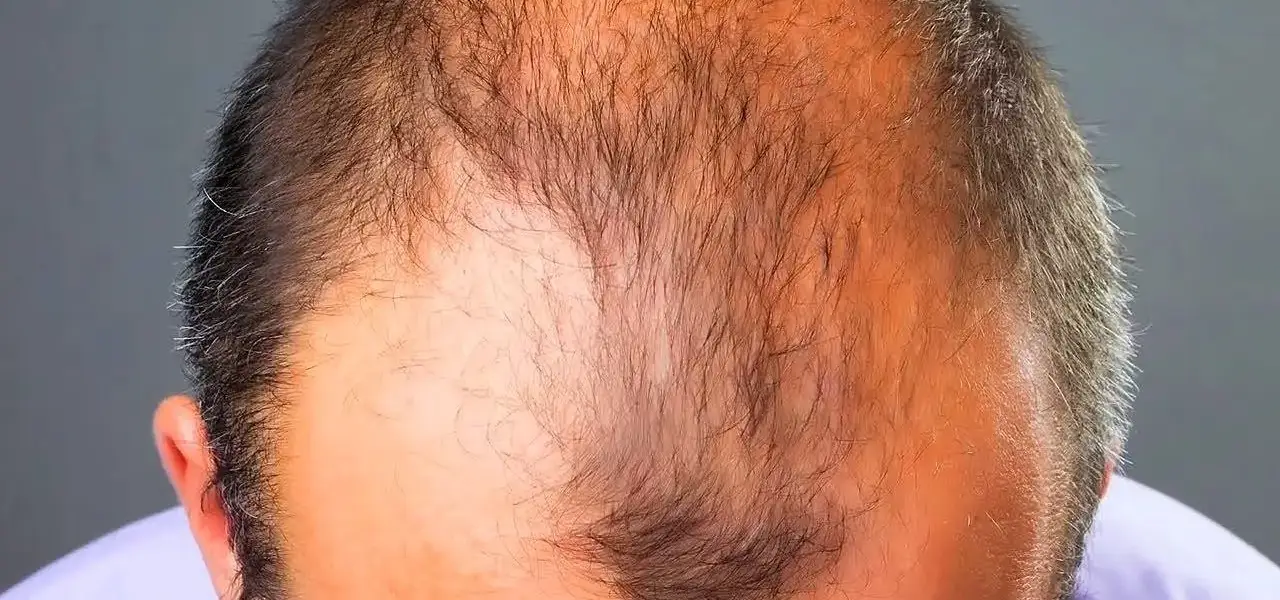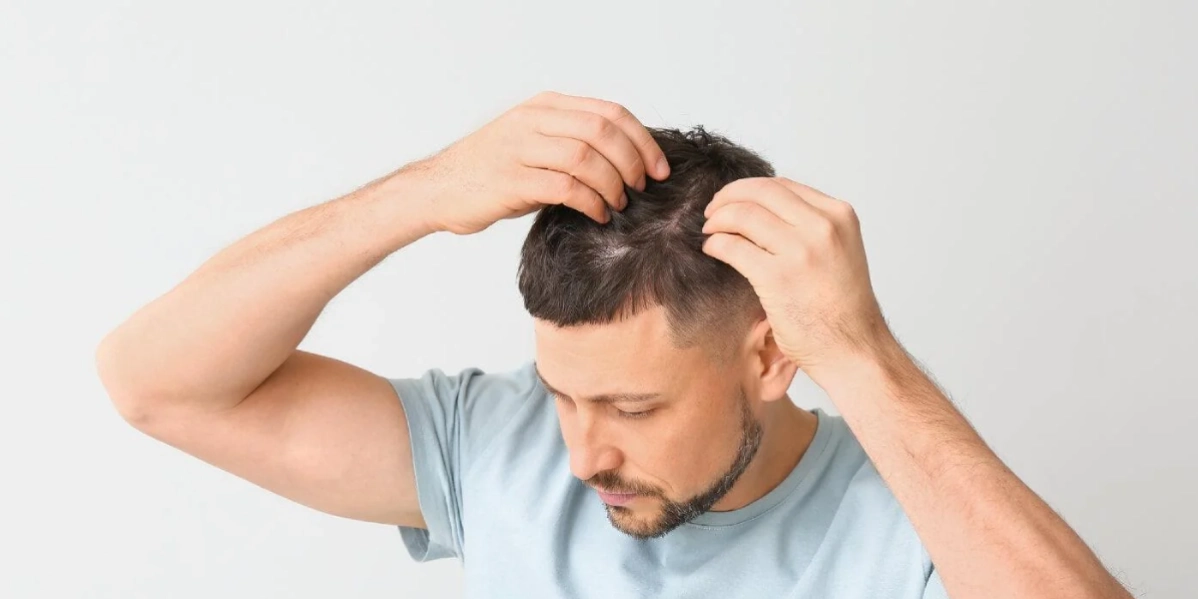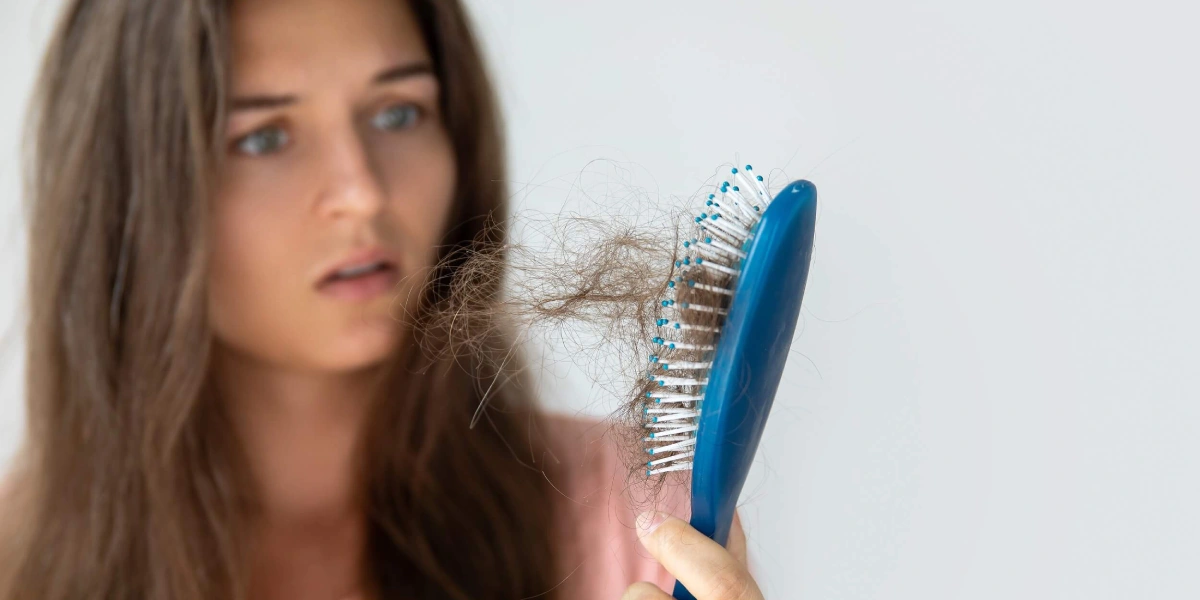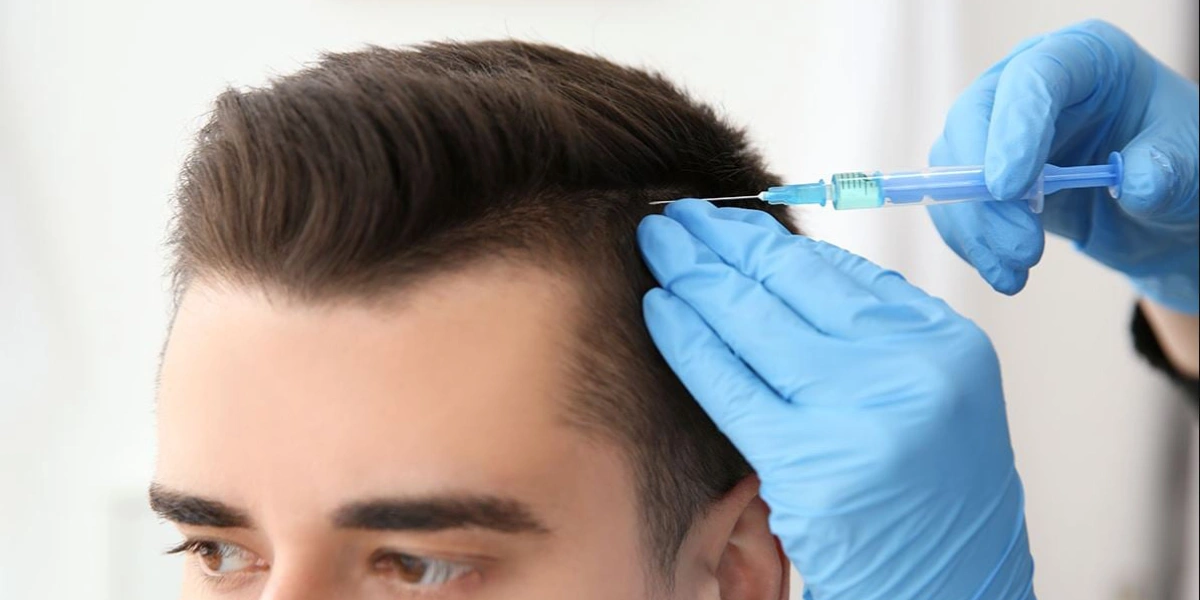
Hair loss can be a tough and emotional experience. It doesn’t just change how you look but can also affect your confidence. Losing your hair might feel like losing a part of yourself, but there is hope. At Hair Transplant Clinic In Islamabad, we offer advanced hair transplant treatments that can help. Whether you have thinning hair, bald spots, or heavy hair fall, modern options like FUE hair transplant in Islamabad and FUT can give you natural-looking results. These hair loss treatments in Islamabad & Rawalpindi are designed to bring back your hair and your confidence, helping you feel good about yourself again. The cost of Alopecia Hair Transplant In Islamabad starts from PKR 94,999.
The goal of an alopecia hair transplant in Islamabad is to restore natural hair growth in areas affected by hair loss, providing a long-lasting solution. The procedure aims to rebuild hair density, giving a fuller, thicker appearance while enhancing facial aesthetics by eliminating bald patches and framing the face naturally. A successful hair transplant in Pakistan boosts confidence, helping individuals feel better about their appearance. It also offers permanent results by transplanting healthy hair follicles that grow naturally over time.
Advanced techniques like FUE, FUT, Exosome with regrowth factor and PRP ensure quick recovery while achieving natural-looking outcomes by carefully mimicking the direction and pattern of hair growth. Additionally, the treatment is tailored to address specific types of alopecia, such as alopecia areata, androgenetic alopecia, or scarring alopecia, ensuring a solution that meets individual needs and expectations.
Procedure Type: Invasive
Procedure Duration: 3-8 hours, depending on the number of grafts
Recovery Time: 1-2 Weeks
Results Timeline: Full results visible within 3-4 months
Cost: PKR 94,999 to PKR 160,000.
Alopecia is a condition that causes hair loss from the scalp or other areas of the body. It occurs when the hair follicles are damaged or stop producing hair, leading to varying degrees of hair thinning or baldness. Alopecia can affect both men and women and may be caused by genetic factors, autoimmune diseases, hormonal imbalances, or stress. The most common types of alopecia include:
While alopecia vs hair loss can be emotionally challenging, there are treatments available, such as hair transplants, to restore hair and improve confidence.
Alopecia hair transplant is a surgical procedure designed to restore hair growth in areas affected by alopecia, a condition that causes hair loss. The treatment involves moving healthy, hair-bearing follicles from one part of the body (typically the back or sides of the scalp) to areas with thinning or no hair. The two most common methods of alopecia hair transplants are:
The goal of an alopecia hair transplant in Islamabad, Pakistan is to restore hair density, create a natural hairline, and improve the patient’s appearance and confidence. The results are permanent as the transplanted follicles are taken from areas resistant to hair loss, ensuring that they continue to grow even in the transplanted sites.
Alopecia hair loss can occur due to various factors, each contributing to the weakening or loss of hair follicles. Some of the common causes of Alopecia hair loss in Islamabad are;
Alopecia Hair Transplant offer numerous advantages, including:
Several advanced hair transplant techniques are available in Islamabad to address various forms of alopecia. Each method is designed to cater to individual needs, ensuring effective and natural-looking results.
There are mainly 5 types of Alopecia Hair Transplant in Islamabad;
FUE is a minimally invasive technique where individual hair follicles are extracted from the donor area (usually the back of the scalp) and transplanted to the bald or thinning areas.
Also known as the strip method, FUT involves removing a strip of scalp from the donor area, dissecting it into individual follicular units, and transplanting them to the recipient area.
DHI is an advanced variation of FUE where extracted hair follicles are implanted directly into the recipient area using a specialized tool.
Though not a transplant, SMP is a non-surgical solution where pigment is applied to the scalp to mimic the appearance of hair follicles, creating the illusion of fuller hair.
PRP therapy is often combined with FUE or FUT to enhance the success of hair transplants. PRP involves injecting platelet-rich plasma into the scalp to stimulate hair follicle growth and improve graft survival.
An alopecia hair transplant is a transformative solution for hair loss, but it may not be suitable for everyone. Anyone can be a good candidate for Alopecia Hair Transplant in islamabad, if they;
An alopecia hair transplant works by moving healthy hair follicles from a donor area (usually the back or sides of the scalp) to areas affected by hair loss. The process involves extracting follicles using techniques like FUE, FUT, or DHI Hair transplant in Islamabad, preparing them, and implanting them into the recipient area following the natural hair growth pattern. The transplanted follicles are resistant to hair loss, ensuring permanent results. After an initial shedding phase, new hair begins to grow within 3–4 months, with full results visible in 12–18 months. This minimally invasive procedure restores natural-looking hair and boosts confidence.
To prepare for a Alopecia Hair Transplant, you should;
Important Pre-Operative Instructions for Alopecia Hair Transplant on Procedure Day
You can expect the following during Alopecia Hair Transplant at Hair Transplant Clinic in Islamabad:
The donor and recipient areas are cleaned, and local anesthesia is applied to numb the scalp. The patient is made comfortable, and the surgeon marks the areas for extraction and implantation.
The harvested follicles are cleaned, sorted, and prepared for implantation. Only the healthiest grafts are selected to ensure successful results.
Tiny incisions are made in the recipient area, mimicking the natural hair growth pattern. This step ensures the transplanted hair blends seamlessly with existing hair.
The prepared grafts are implanted into the incisions using advanced techniques like DHI or standard FUE tools, ensuring precision and density.
Once all the grafts are implanted, the scalp is cleaned, and post-procedure instructions are provided. Bandaging is minimal or unnecessary, depending on the technique used.
The entire procedure typically takes 3–8 hours, depending on the number of grafts required. Patients can return home the same day, and the recovery process begins immediately.
The recovery period after an alopecia hair transplant is gradual and follows several stages. In the first week, you may experience mild swelling, redness, or discomfort in the donor and recipient areas, along with tiny scabs that naturally fall off within 7–10 days. During the next 2–4 weeks, the transplanted hair may shed—a normal phase that allows the follicles to begin producing new hair. By 3–4 months, new hair starts to grow, initially thin but gradually thickening over time.
Significant results become visible between 6–12 months, with full, natural-looking hair restoration achieved by the end of the first year. Proper post-procedure care, including gentle washing, avoiding strenuous activities, and following your surgeon’s instructions, ensures successful recovery and lasting results.
The treatment of Alopecia Hair Transplant in Islamabad and Rawalpindi, Pakistan does not end here. Proper aftercare is essential for optimal healing and ensuring the success of your alopecia hair transplant. Here’s what you need to do after the procedure:
The results of an alopecia hair transplant are transformative but develop gradually over time. In the first few weeks, the transplanted hair may shed, which is a natural and temporary phase as the follicles adjust. Alopecia hair regrowth typically begins around 3–4 months post-procedure, initially appearing thin and fine. By 6–9 months, the hair becomes denser, with a noticeable improvement in volume and texture.
Full results of alopecia hair regrowth signs are usually visible within 12–18 months, with the transplanted hair blending seamlessly with existing strands. The transplanted follicles are resistant to hair loss and grow naturally, offering permanent and natural-looking restoration. With proper aftercare and maintenance, patients regain not just their hair but also their confidence and self-esteem.
An alopecia hair transplant offers a permanent and natural solution for individuals struggling with hair loss caused by conditions like alopecia areata or androgenetic alopecia. Unlike temporary treatments, a hair transplant restores your own hair, ensuring it grows naturally and blends seamlessly with your existing hair. The procedure is minimally invasive, with advanced techniques like FUE and DHI delivering precise results and minimal downtime.
By choosing a hair transplant in Islamabad, you benefit from improved hair density, a youthful appearance, and boosted confidence. It’s a long-term investment in your self-esteem and well-being, helping you reclaim the look you desire without relying on ongoing treatments or products.
The cost of an alopecia hair transplant in Islamabad and Rawalpindi ranges from PKR 94,999 to PKR 160,000. It varies based on factors such as the extent of hair loss, the number of grafts required, the technique used (FUE, FUT, or DHI), and the clinic’s expertise. On average, the price of alopecia hair loss treatment, depending on the complexity of the procedure and the surgeon’s reputation.
The best surgeon for an alopecia hair transplant in Islamabad should have extensive experience with techniques like FUE, FUT, and DHI. Look for a reputable surgeon with positive reviews, certifications, and a personalized approach. Experienced surgeons like Dr. Humayun from Hair Transplant Clinic In Islamabad is known for his skill and patient care. Always consult in person to ensure you’re comfortable with the surgeon’s approach and expertise.
If you’re looking for an affordable alopecia hair transplant in Pakistan, many clinics in Islamabad, Lahore, and Karachi offer cost-effective options but they can compromise on quality. Prices for hair transplants can start as low as PKR 94,999, depending on the number of grafts and the technique used, such as FUE or FUT.

Hair loss can be an emotional and confidence-shattering experience. For many, th
Read More
The origins of hair loss are multifaceted, spanning from genetic predispositions
Read More
Hair transplant surgery has become famous for those looking to recover their hai
Read More